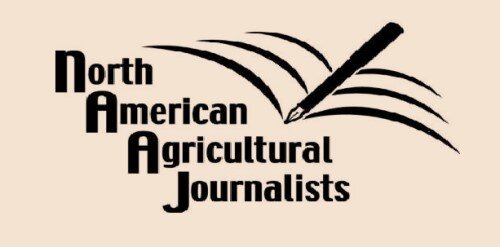NAAJ Editorial Winners - 2022
Entries in this category require the writer to build arguments on fact and logic to address a certain issue. An editorial should state a position and convince the reader of the need for action. Note: ONE column is submitted as a single entry.
Number of entries: 12
Comments about the competition: I judged all entries based on the description for the category: “Entries in this category require the writer to build arguments on fact and logic to address a certain issue. An editorial should state a position and convince the reader of the need for action.”
— Judge: D’Arce McMillan — Freelance writer; retired from Western Producer after 20 years as markets editor, columnist and member of editorial board
FIRST PLACE — Urban Lehner, DTN/Progressive Farmer
An Impossibly Meaty Commercial — 6/1/2021
Judge’s comments: A well-researched and clearly written piece that makes a call for action, although we have to wait until the last graph to read about it. The writer does a good job of using the written word to describe the allure what he sees as a powerful video commercial. The column is also insightful when analyzing the commercial’s messages and their effectiveness. It is similarly insightful when looking at the reactions of farmers to artificial meat, judging the outrage and efforts to change labeling laws as ineffectual. The column also offers an argument why the cost of artificial meat is not an issue for many influential consumers and zeros in on the rising trend of tying diet to values. And then the column finally comes to its call to action, ie. the meat industry needs to make its own commercials telling its story. As I read the piece I got the sense of a slow burning sizzle of the writer’s frustration that the meat sector is not facing effectively the challenge presented by artificial meat. By the time we get to the last sentence, the writer has mustered enough fact and logic to make the call to action seem worthwhile. Generally, I prefer editorials to make the call to action early and then make the argument why it is necessary, but in this case the approach the writer employed does work.
SECOND PLACE — Todd Hultman, DTN/Progressive Farmer
How Much Corn Will China Import? — 7/16/2021
Judge’s comments: This entry is an argument why this contest needs a category for analytical pieces. This is a good analysis of China’s potential corn import demand, backed up with lots of data. The column does follow the first sentence of the editorial category description “to build to build arguments on fact and logic to address a certain issue.” The “issue” is the question posed early on: Will China be back for another billion bushels of corn imports in 2021-22? By the end of the column the writer has provided lots of data to answer that question in its broad context. China simply does not have the land to meet its growing needs and tinkering around feed rations and agricultural policy is not going to solve its problem. And in the final graph the writer addresses the implications of this for American farmers, namely the strong demand should keep corn prices strong. He leaves it there though, without identifying a need for action. But based on the thoroughness of of the fact and logic used to address the issue, I’ll rate this entry near the top.
THIRD PLACE — Michael Raine, Western Producer
Cattle theft serious issue, despite portrayal on TV — 2/4/2021
Judge’s comments: I like that the writer states a position in the first graph. Too often writers load up the beginning of editorials with background and asides that leave the reader wondering what it is about and why they are reading it. The writer uses the example of a popular TV series and other works of fiction to note the tendency to glamourize rustling. The writer takes a position, arguing rustling is theft and it should not be portrayed as a lesser crime. The piece notes examples of recent cattle thefts in the region. The argument would have been more convincing if details of these thefts were provided: What was the value of the cattle? Was the management of the herd disrupted long term? How were the cattle distressed by the rustling? Show the harm. The piece ends by saying efforts to curtail rustling would be assisted by closing down the myth of the rustler as anti-hero. The editorial would have been stronger if it had suggestions about how to end that myth. Do the courts take the crime seriously enough? Do media organizations cover cattle rustling as major thefts? Should cattle organizations write to TV producers outlining concerns about portrayals of cattle rustling?

